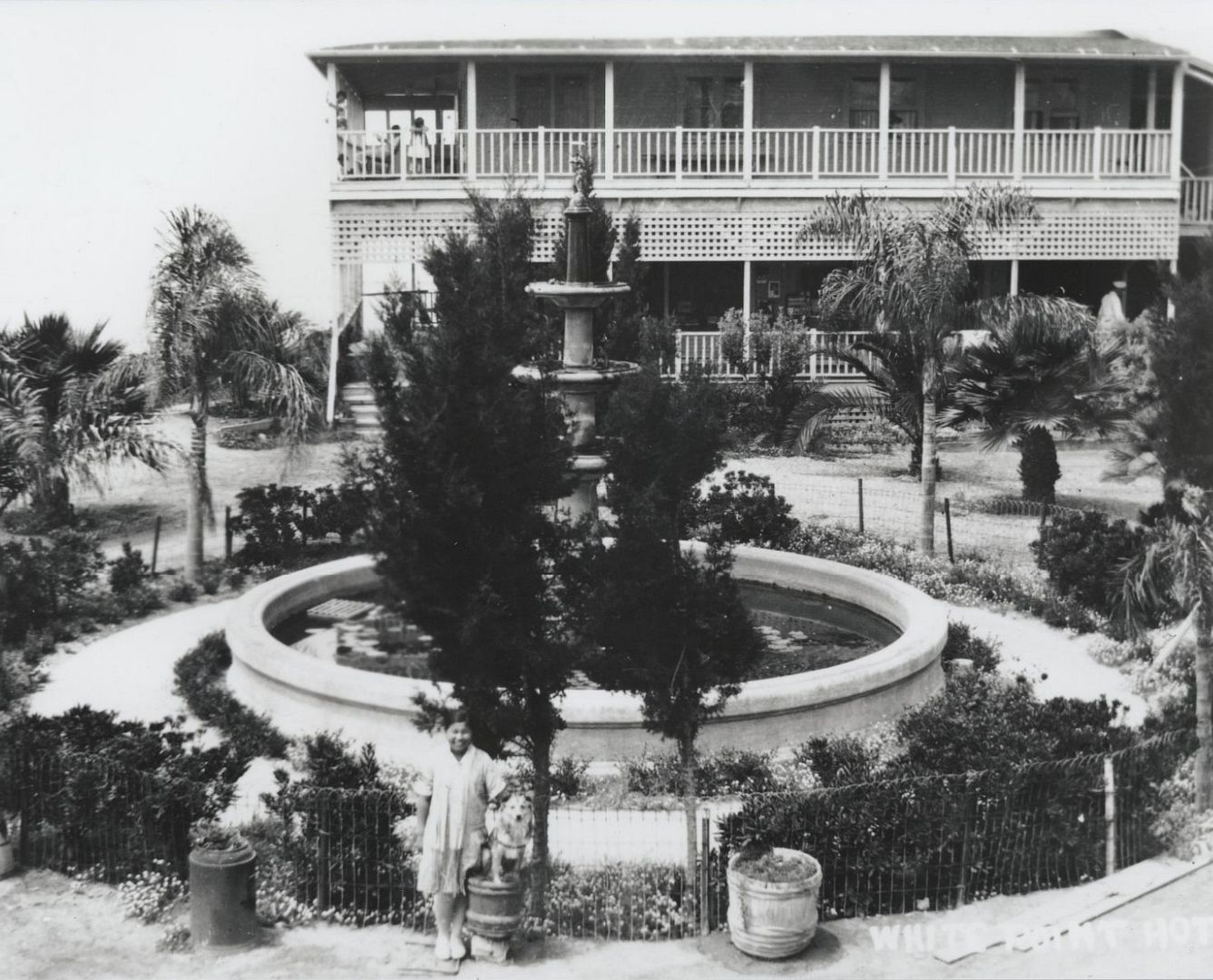[Last updated 6/29/23 11:27 AM PT—Archival photo replaced at bottom and video embed added.]
But because when I arrived, I didn't really know what I was looking for, or exactly where I was...
...I mistakenly started walking down shore, towards the familiarity of San Pedro and the Point Fermin and Angel's Gate Lighthouses...
...where I became entranced by a number of feral cats...
...living and wandering amongst the rocks.
I soon happened upon what appeared to be building foundations in the water...
...quickly disappearing as the tide rolled in.
These are actually the remains of concrete walls of the swimming pool of the White Point Hot Spring Hotel (also known as the White Point Health Resort)...
...which was a beach resort in the 1920s and 30s popular with Japanese-Americans, particularly newlyweds, patients seeking its healing waters, and even the 1932 Japanese Olympic team.
Prior to the resort being built, a Japanese fishing village thrived at this location in the late 1890s...
...harvesting an abundance of abalone (the fish canned or dried as food and the shell used for decoration) until the supply depleted in the early 1900s.
Subsequently, two Japanese brothers Tojuro and Tamiji Tagami arrived in 1910...
...discovered natural geothermal sulfur hot springs (known as onsen 温泉), which they dug out...
...and built roads leading to their resort, a two-story hotel and restaurant which also included a bathhouse, enclosed saltwater swimming, boating, and fishing.
They developed the area along with Ramon Sepulveda, whose Royal Palms recreation area (including the terrazzo dance floor surrounded by fireplaces and benches, which you can still see today) was just up the shore.
But the Tagami brothers could never buy the land from Sepulveda...
...as Asian immigrants were ineligible for citizenship, and therefore prohibited from land ownership by the Alien Land Law of 1913 (eventually deemed unconstitutional in 1952 and repealed in 1956).
Although the resort thrived amidst anti-Japanese sentiment (dating back to the abalone fishing days)...
...since it was one of the few recreational facilities that the Japanese were allowed to use...
...it could not survive the force of nature, with storms battering the coast in 1928, and the Long Beach earthquake crumbling the structures and blocking the flow of the hot springs in 1933.
Combined with the Great Depression, the resort finally closed in the late 1930s...
... and in the 1940s with the onset of World War II, the military took over the beaches and moved the Japanese and Japanese-American residents to internment camps.
For years, the white fountain from the resort's spa lay in ruins down on the beach, until it was brought up to the bluff above in 1982, and later restored and placed as the centerpiece of the entrance to White Point / Royal Palms County Beach, which got a huge makeover in 1997.

Kay Tagami and her dog "Choco," circa 1925 (Photo: Palos Verdes Digital Archives)
But, like many sites in LA, you can walk right by it and not even know its significance.
Further Reading:
A Historic Cove Comes Back to Life - California Coast & Ocean (Summer 1997)
White Point Hot Spring Hotel - The Daily Breeze (June 2010)
Five Views: An Ethnic Historic Site Survey for California - A History of Japanese Americans in California: HISTORIC SITES (White Point)- National Park Service
Related Posts:
Photo Essay: Combing the Beach For the Royal Palms Country Club
Photo Essay: Cabrillo Beach & A Crumbling Concrete Bunker
Photo Essay: San Pedro's Sunken City
Photo Essay: Hike to a Ghost Shipwreck
A Historic Cove Comes Back to Life - California Coast & Ocean (Summer 1997)
White Point Hot Spring Hotel - The Daily Breeze (June 2010)
Five Views: An Ethnic Historic Site Survey for California - A History of Japanese Americans in California: HISTORIC SITES (White Point)- National Park Service
Related Posts:
Photo Essay: Combing the Beach For the Royal Palms Country Club
Photo Essay: Cabrillo Beach & A Crumbling Concrete Bunker
Photo Essay: San Pedro's Sunken City
Photo Essay: Hike to a Ghost Shipwreck

No comments:
Post a Comment